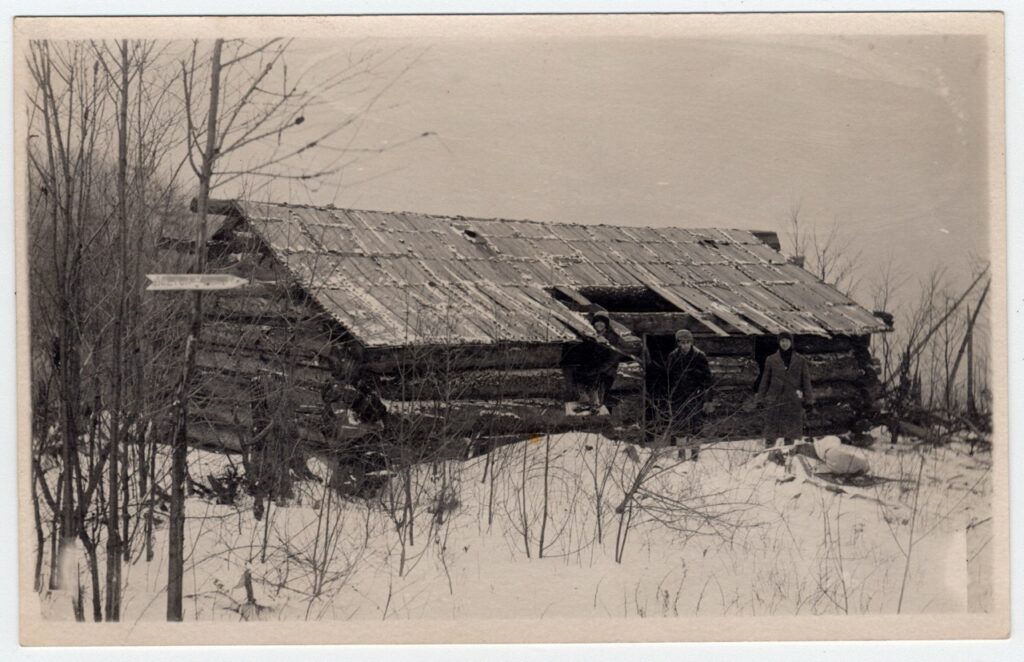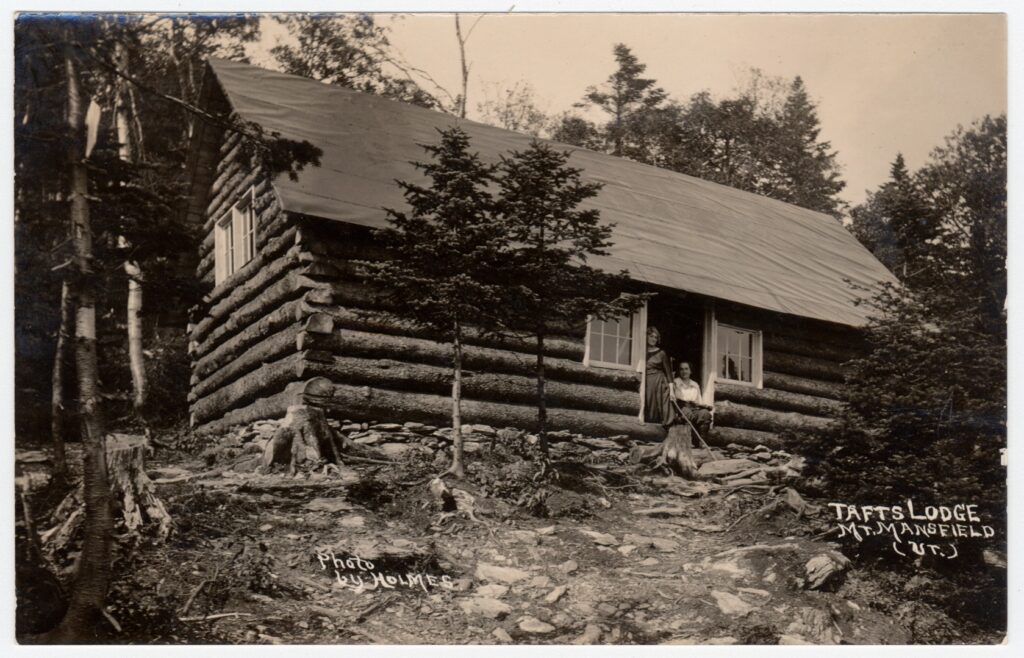This article appears in the 2025 Spring Long Trail News and was written by GMC Project Coordinator Justin Towers.
One of the larger field projects this summer will be structural repairs to Taft Lodge, the oldest, largest, and second-highest shelter on the Long Trail. After a rebuild in 1996 and successful log replacements in 2016, the 105-year-old shelter once again needs attention.
Notoriously snowy winters have taken their toll, with snow piled against the shelter encouraging rot in the lowest logs that had not appeared before the 2016 restoration. So we will again restore the historic cabin’s appearance, function, and structural integrity, while adhering to historic preservation standards.
Serving on the Long Trail Patrol crew that replaced rotten sill logs in 2016 was the highlight of my six years on the seasonal staff. Now, as a project coordinator, I am pleased to plan and oversee the project.
105 Years of History

Taft Lodge sits at 3,650 feet, 0.8 trail miles from the summit of Mount Mansfield, at 4,395 feet the highest point in Vermont. Judge Clarence Cowles, a charter member of the Green Mountain Club and builder of the Long Trail between Camel’s Hump and Mount Mansfield, spearheaded the effort to build the lodge in 1920.
Cowles hired local lumbermen and builders Willis Barnes and Clyde Brink to construct the shelter in the summer of 1920. Its namesake, however, was Judge Elihu Taft, a colleague of Cowles who donated the construction costs. Taft’s stated capacity is 32 campers, but a glance inside the truly cavernous lodge makes this figure seem conservative. It is a historical icon of Mount Mansfield and the Long Trail.
Beginning the Restoration Process

Replacing the lower logs of any large log cabin is daunting enough. Doing so most of the way up the tallest mountain in Vermont is another order of challenge. In 1920 horses hauled logs up the mountain, a testament to the determination needed for major tasks before modern machinery. Today however, using horses would be impossible: the route they took no longer exists, and improving the Long Trail for horses is not in line with modern environmental standards and management goals for the trail. So, we’ll do as we did in 2016, and use a helicopter.
Five logs of varying lengths from 8 ½ to 13 inches in diameter will be required. Some will replace entire logs. Others will replace rotten sections, “scarfed,” or fitted, into the rest of an existing log. We expect to cut more than one log from a single tree.
In the past, we’ve replaced Taft Lodge logs with spruce trees harvested from Will Monroe’s old tree farm at the end of Camel’s Hump Road in Duxbury. Monroe was a contemporary and friend of Cowles who was responsible for extending Cowles’s original trail from Camel’s Hump southward to Middlebury Gap. So it seems fitting to source logs from his farm, now part of Mount Mansfield State Forest. With permission from the Vermont Department of Forests, Parks and Recreation, we’ll do it again.
After felling the trees, we’ll cut each just a little longer than we need, and debark them before the airlift. This may seem less impressive to people nowadays than transport by horses. However, I believe Cowles, Barnes, and Brink would think otherwise.
Finishing the Job
In 2026, after the logs have had a chance to dry a bit, we’ll return to finish the job. Stay tuned for a full report, but in broad strokes, we will use six-by-six-inch timbers and heavy duty screw jacks to support the wall above each log we will replace. We’ll cut the rotten log free, chopping it out until there is room for a fresh one, with the wall suspended in the air.
Then, we’ll prepare the new logs. After a year’s seasoning they will be lighter and easier to move. Sills must be milled or hewed flat on one side and free of protruding knots or imperfections on the other. Each log for the second course will get similar treatment on top, while the bottom will be “Swedish scribed” to conform to any irregularities in the log below. Every log will require joinery on each end: saddle notches for full replacements, and scarf joints for partial replacements to fit into corresponding scarf joints on the sound existing logs in the same course.
Now for the hard part: The newly prepared replacement logs must be slipped into place. Speaking from experience, this will require one part rigging, one part sweat, and one part Yankee ingenuity. Logs are irregular, both old and new, so each one will probably require an approach a different than the log before it.

As expected with a large-scale project on a historic shelter, there is a significant cost associated. The Green Mountain Club is looking to raise $100,000 over the next two years to fund the necessary project design, materials, air lift, and skilled backcountry construction crew. I’m eager to be back at Taft over the next two summers, and I’m honored to have a role in preserving Mount Mansfield’s highest and largest backcountry shelter. I hope Cowles, Barnes, Brink, and Taft would be proud of the club’s continued commitment to keeping the cabin they worked so hard to build.




















Leave a Reply